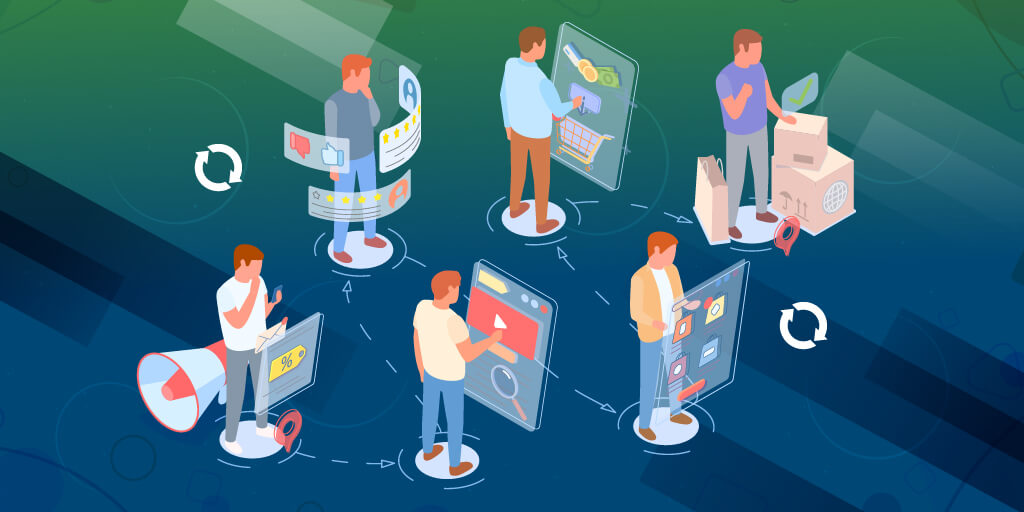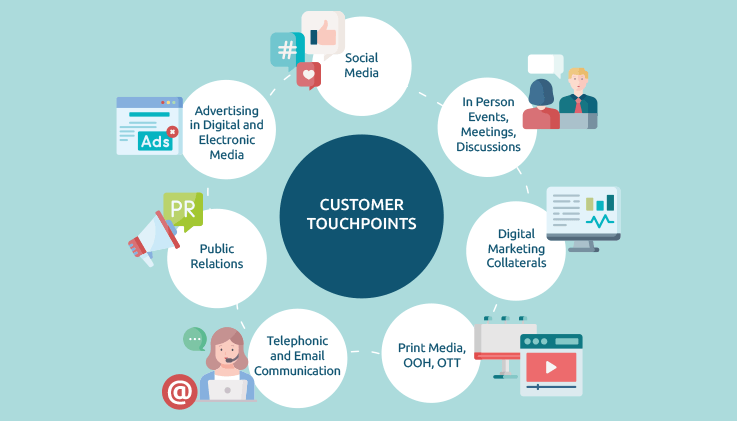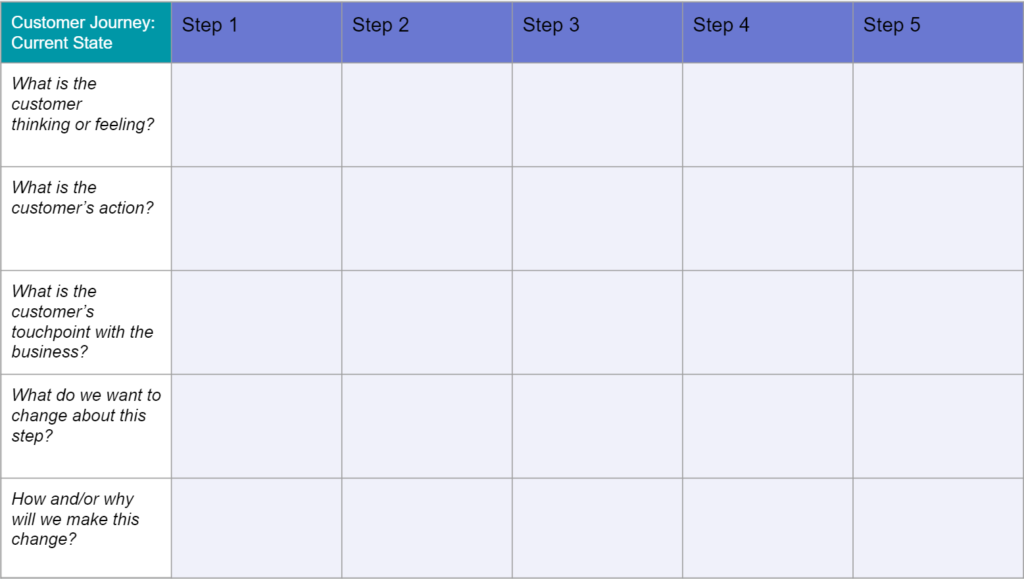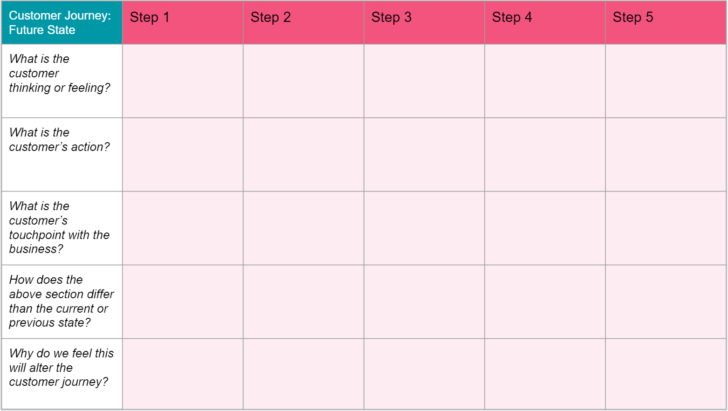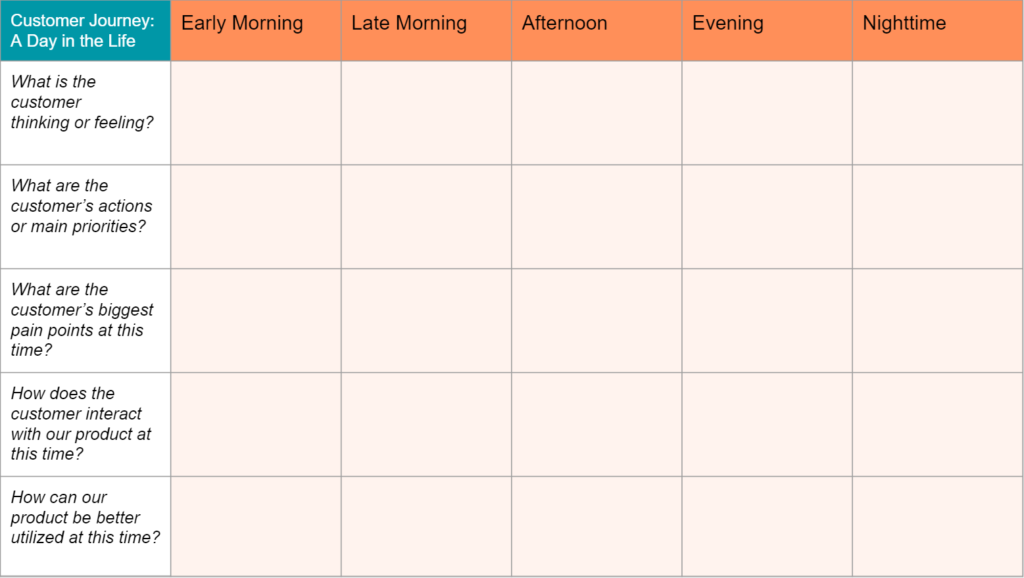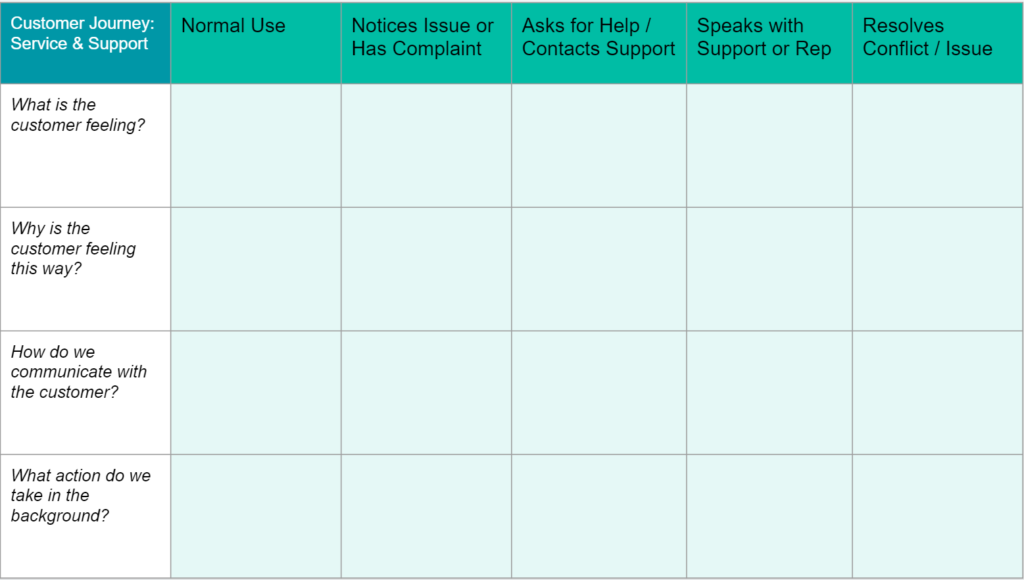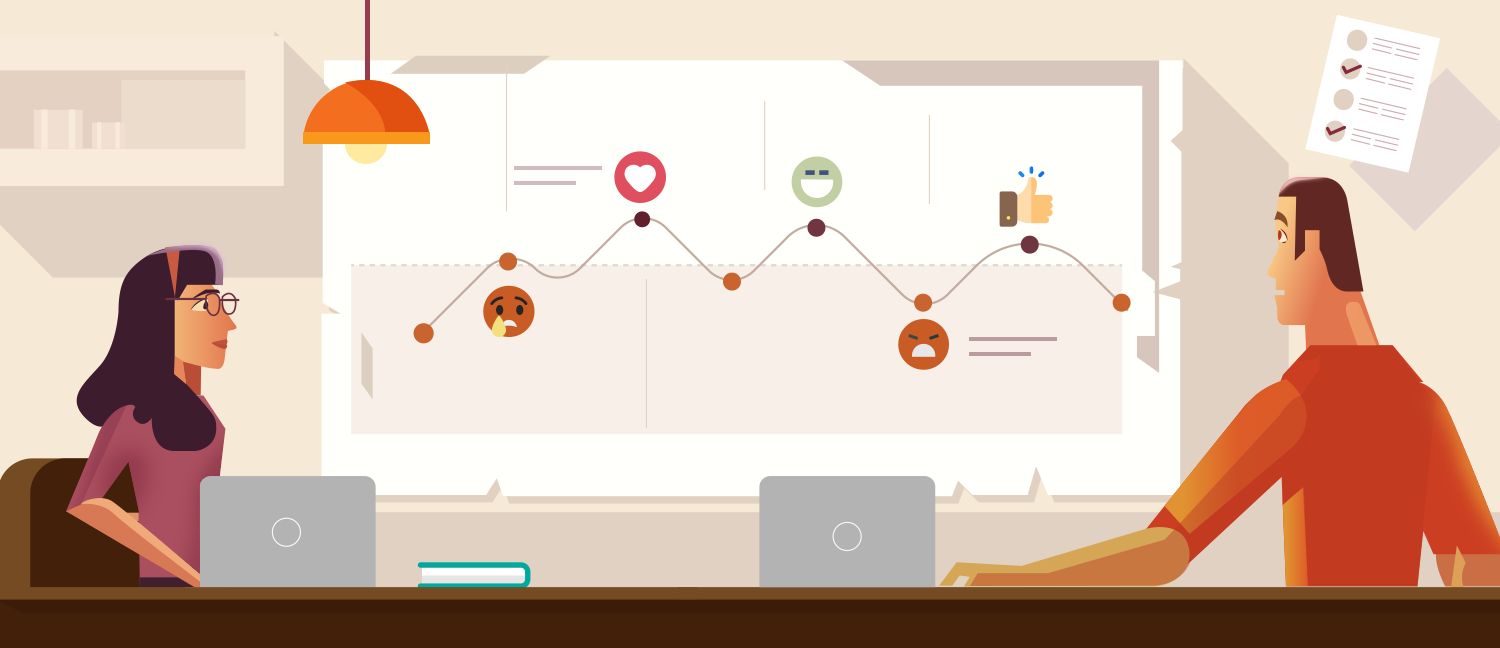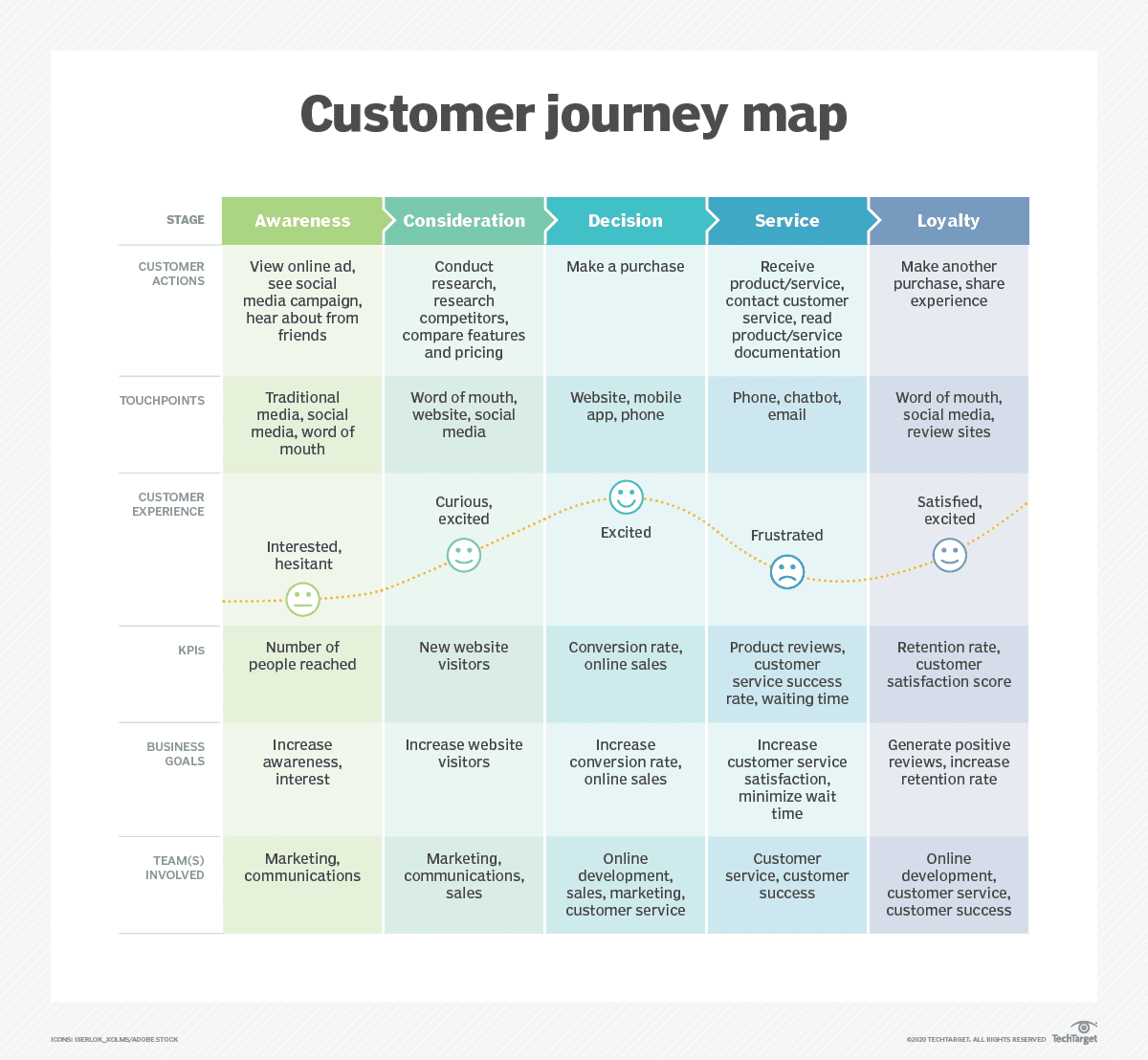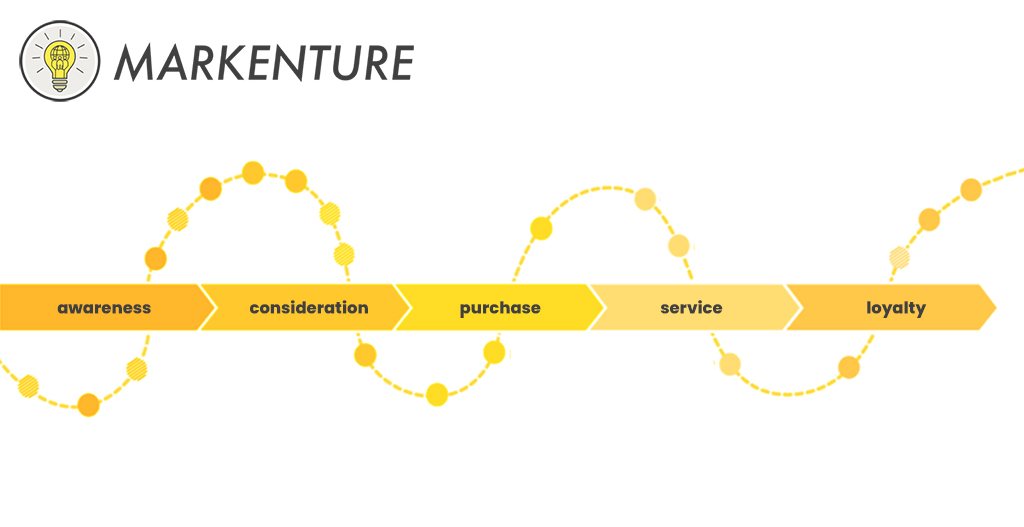
The way consumers interact with brands is very different from how it was 10 years ago. These days they are operating through multiple channels and touchpoints, such as scrolling on social media or seeing an ad while searching on Google. To truly succeed with your marketing efforts and sales tactics, you need to be aware of how your customers are interacting with your brand. But, to do that you need to understand the customer journey.
In this blog post, we will go over what the customer journey looks like, and give you the tools to create a customer journey map that can help you deliver the best experience to your customers.
- What is a customer journey?
- The 7 phases of the customer journey
- Why customer journey stages are important
- What is a customer journey map?
- When should you use a customer journey map?
- The Benefits of Customer Journey Mapping
- What are customer journey touchpoints?
- Types of Customer journey maps
- How to create a customer journey map
What is a customer journey?
Before we dive into the process of creating our very own customer journey map, let’s get a better picture of what a customer journey actually is.
The customer journey can be defined as the steps or experiences a customer goes through when getting in contact with your brand. Meaning that you look at the full journey of the customer and not just specific events, like purchasing.
The journey begins when the customer first gets in contact with the brand. It then follows the multiple touchpoints leading up to a purchase, and the purchase experience itself.
The reason it is so important to understand the customer journey is to identify potential obstacles that the customer may encounter along the way – you want to make the customer experience as flawless as it can be. Familiarizing yourself with the process can therefore lead to finding opportunities to improve the customer journey. It allows you to step into the shoes of the customer and understand what is making them buy or not buy from your brand.
The 7 phases of the customer journey
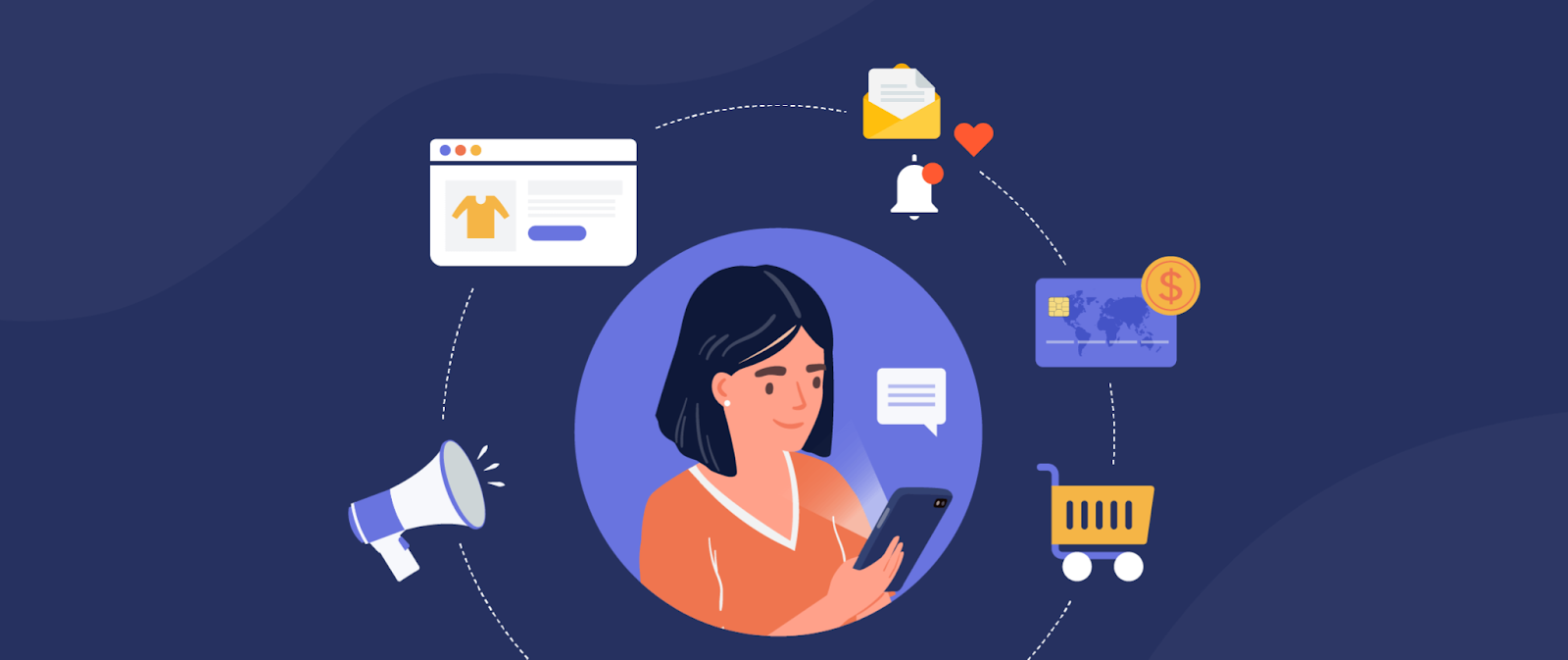
As mentioned, the customer takes a few steps before making the actual purchase. The customer journey also referred to as the customer lifecycle, begins with a problem or need that the customer wishes to solve, and ends with the customer finding a solution to their problem and making a purchase. Let’s go through the 7 phases step by step to understand what the different stages look like.
Before purchase:
1. Awareness
In the awareness stage, the customer is becoming aware of a problem they would like to solve, or a need they wish to fulfill. For example, Hanna notices that her 4-year-old computer is having some problems, including slow boot-up- and loading times, but she is not sure what is causing it.
2. Interest
During the interest stage, the customer begins to conduct research regarding their problem, to find potential solutions. Hanna decides to turn to google and conducts some research. She finds a blog post about what causes slow boot-up times and what to do about it. Hanna starts by following the tips from the blog post but when nothing works, she begins to realize it might be time for a new computer altogether.
3. Consideration
After thorough research, the customer has now found a solution to their problem and begins the next phase of research. Hanna has come to the realization that the solution to her problem is to get a new computer. She begins researching the web for computer retailers, considering the various options available.
During purchase:
4. Evaluation
The customer begins evaluating their options to find the best solution to their problem. This is done by comparing products and services to other solutions on the market. Hanna has narrowed down her search and evaluates a couple of retailers by reading customer reviews, comparing prices, and looking at competitive brands for the best solution.
5. Decision
The customer is now ready to select one option. They have gathered enough information to be well informed, but might still need some persuasion to make the purchase. Hanna has decided on the retailer that best fits her computer needs. But, before she makes the purchase she wants to read customer reviews to make sure she is making the right choice.
6. Purchase
The customer is persuaded and completes the purchase. Hanna feels content with the information she has received and decides to buy the computer.
After purchase:
7. Loyalty & Advocacy
The purchase might be the goal, but the journey doesn’t stop there. Retaining existing customers is equally as important as acquiring new ones. When you have gained trust and business from the customer, you’ll want to maintain it for future purchases. By building a loyal customer base you can receive great advocacy for your brand, which could lead to more business. For example, the company Hanna bought her computer from sends her discounts on other tech items and nurtures their relationship with her. Hanna is happy with her purchase and the customer services and decides to spread the word about the brand. Hanna will be more inclined to write a positive customer review or testimonial if the company continues to be helpful and provide value even after the purchase.
Why customer journey stages are important
To meet your customer’s needs and create the best experience possible, you need to understand their behavior. That way, you will eliminate the guessing game and identify where obstacles and friction occur and how you can overcome them. It provides you with a roadmap of how to use your content effectively to interact with your customers at each stage of the journey. This means you’ll know what has the most impact where.
The goal is to drive your visitors from the top of the sales funnel down to the bottom and turn them into customers. By tracking each stage individually you can identify what is working to drive them further along the journey.
So, how do you do this? By creating a Customer Journey Map.
What is a customer journey map?
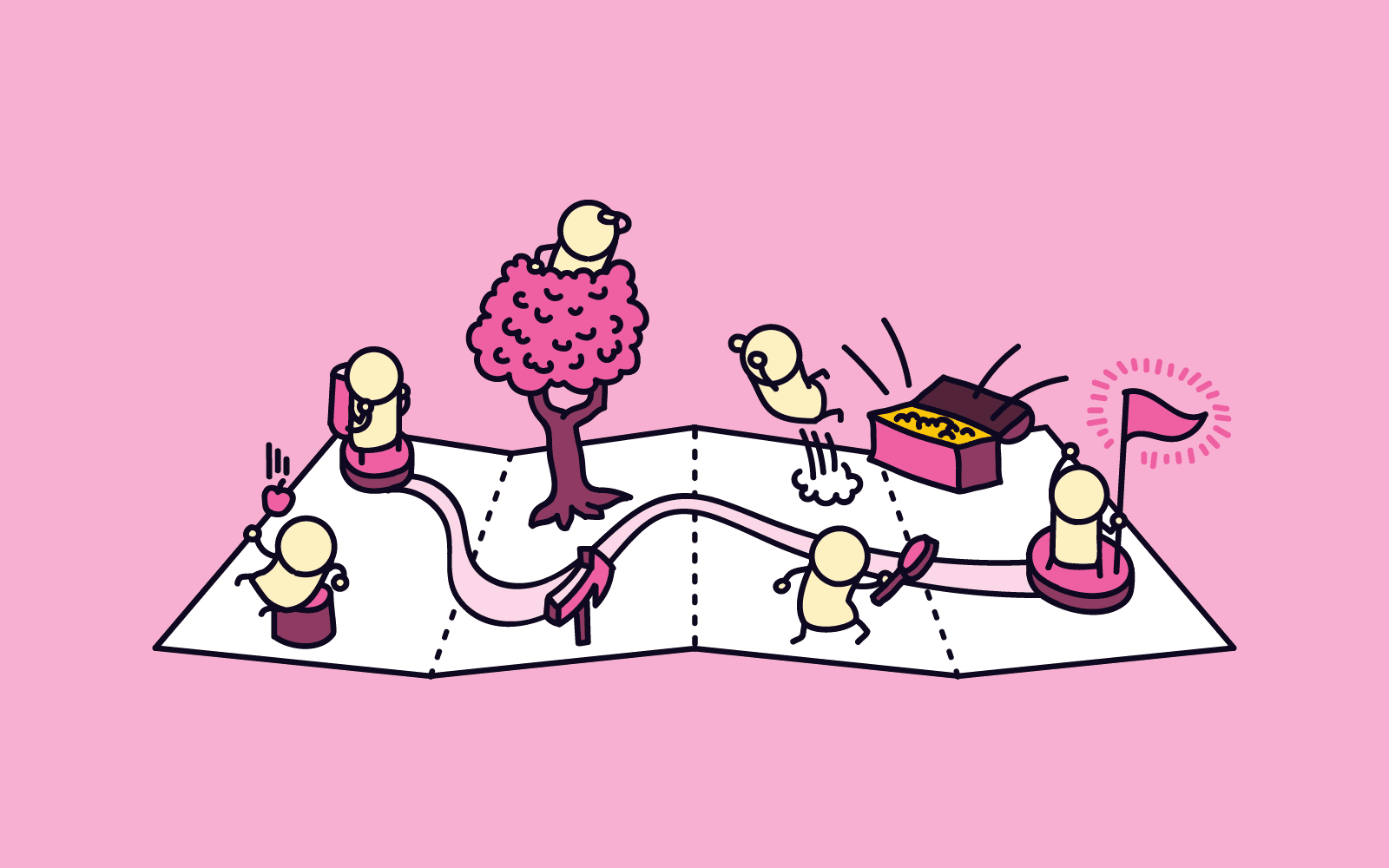
A customer journey map is a visual representation of the steps a customer is going through when being in contact with your brand. It displays their emotions and experiences as they move through the funnel, which helps you to identify their needs and concerns.
It is a tool that you can use to view your customer’s relationship with your business over a period of time. It allows you to see what motivates their actions during each step of the journey and how they experience your products or services. This type of information is valuable as it helps companies to improve the customer experience and boost conversion rates.
The mapping process can be broken down into three stages:
– Map out the customer lifecycle (the 7 phases)
– Determine and list your company and customer touchpoints
– Analyze and identify snags and obstacles in your current strategies
Below we will go into more detail with a step-by-step guide on how you can create your customer journey map.
When should you use a customer journey map?
A customer journey map should be utilized throughout all marketing efforts. From the point of developing the digital strategy to creating content assets. The map applies to all teams and departments within the company, as it improves internal communication and prevents silos.
The Benefits of Customer Journey Mapping
So, why do you need a customer journey map?
Some companies argue that they don’t need a customer journey map, that they already know the potential pain points and needs of their customers. However, if you want to continue to maximize customer satisfaction, marketing efforts, sales, and your overall team collaboration, you will need to continuously improve the customer experience as it is an ever-evolving process. Let’s take a closer look at some of the benefits of customer journey mapping.
Marketing
-
- It gives you the means to enhance and develop your content marketing strategies. By analyzing the steps a customer takes, a customer journey map can provide a clear roadmap of what content you should utilize and where to interact with the customer. It leads to omnichannel marketing, which contributes to accurate retargeting efforts and other marketing across all channels.
- It helps you predict customer behavior. You can better anticipate or conclude what type of behavior your buyer personas are likely to demonstrate at each touchpoint. When you understand their decision-making process you can utilize your marketing efforts to meet their needs and desires – providing value.
Sales
-
- A customer journey map allows you to improve the overall customer experience. Companies that do this well, grow faster and prove more profitable because they are able to retain customers and gain referrals, which leads to lower acquisition costs and more conversions, from both new and existing customers. According to statistics, 33% will consider switching brands after 1 bad encounter with a brand. By reducing the pain points with the brand, fewer customers will exit the funnel.
- The map enables you to spot actions that aren’t as profitable. For example, if you continue to use sales tactics or resources that fail in assisting your business goals or bringing in consistent revenue. It can also help you understand where you might need to remove unnecessary steps in the journey to allow for an easier user experience. For example, if you notice that customers have a tendency to opt-out at certain steps, why are they doing so? Nowadays, the world moves at an incredibly fast pace, and so do customers. They want straightforward, easy navigation, and quick checkout processes. Make the journey as smooth as it can be to increase your chances of conversions.
Customer service
-
- It gives you a customer-oriented perspective that puts you in the shoes of your customers. This empathic insight will help you understand your customers’ motivations and the emotions they experience during the journey. Companies compete over value, now more than ever. The map will help you recognize how you should design the journey, as well as communicate with your customers to provide the best value possible.
- The map allows you to identify pain points and friction that may occur when the customer moves through the journey. By understanding your customers’ experiences with your brand, as they move between touchpoints, you can find gaps in the journey and find solutions on how to improve these weaknesses, providing a smoother experience.
Leadership
-
- Foster a customer-focused mentality in the company. Shifting the focus in the company to goals that meet the needs of the customer rather than sales goals. By sharing the customer journey with every department you will be able to bring the teams together to work towards resolving customer dilemmas and improving customer satisfaction.
- It supports and improves the internal collaboration within your organization by providing consistent and reliable data that concerns all teams. It prevents silos, which means the map keeps everyone informed and on the same page. This can lead to finding more areas that need improvement.
What are customer journey touchpoints?
A customer journey touchpoint refers to any contact a consumer has with your brand, whether it’s through a website, an ad, or visiting a retail store. It also shows what experience the consumers have as they interact with you at each touchpoint.
These touchpoints can occur before, during, and after a purchase, which is why it is important to understand and document what they are so that you can optimize and improve the consumers´ experiences at all stages of the journey. Start by making a list of all the possible contact points customers have with your brand. This will give you a good foundation to stand on, but to make sure you have uncovered all essential touchpoints, put yourself in the customer’s shoes and take the journey yourself, document your findings.
If you still feel like something is missing, or need to confirm your findings, the easiest way to gain some insight is to ask your customers directly. Interview them about their experiences before, during, and after their purchase.
Types of Customer journey maps
When making your customer journey map you should consider which type of map you might need. Each map has a different objective and business focus. You can choose between the following:
Current state
The current state helps you to map out your customer’s current actions and emotions as they interact with your business. It shows you how they interact with your product or service and highlights where in the journey there is a need for improvements, as well as its strengths. This type of map can be utilized to continually improve the customer journey. If you wish to identify and report on existing problems and brainstorm solutions for pain points, you should choose a current state customer journey map. For example:
Future state
The future state map has two main purposes:
- To predict customers’ expectations and demand
- Visualize an ideal-state journey.
Similar to the current state, this map documents customers’ actions, emotions, and needs as they interact with your business. But, because it doesn’t focus on current problems, it can offer more innovative opportunities that allow you to transform your current customer journey or create new experiences. In other words, it shows you what the journey should look like and what your customers are likely to expect from the experience you are providing.
The future state map helps visualize your vision and direction which can aid your business in setting strategic goals and generate principles that all teams can go after. The future state is also great for optimizing your UX/CX efforts and creating opportunities for new customer segments. For example:
Day in the life
The day in the life map gives you insight into customers’ thoughts, pain points, and needs throughout their day. So, instead of journey stages, it visualizes customers’ daily routines or habits. You can use this map to address problems your customers didn’t even know they had and calculate when in the day your customers might find your product or service to be the most valuable. This helps direct your marketing efforts. For example:
Service Blueprint
The service blueprint is normally a simplified version of the current or future state maps, but with a diagram that demonstrates the different factors within the organization itself that help deliver the customer experience such as people, processes, technologies, and policies. It serves as a roadmap for the internal workings of an organization, to identify what is needed, what works, and what does not work to create the customer journey. Use this type of map if you need to find solutions to procedural changes within your organization. For example:
How to create a customer journey map
The reality of the sales funnel is that consumers don’t always move from one place to another in one fell swoop. Many times they go back and forth. Therefore companies need different ways to map out the customer journey.
There is no one-size-fits-all when it comes to what method you should use. It’s very individual depending on the company, and so a good idea is to try a few different methods before choosing the one you are going to use. Some examples include spreadsheets in Excel, post-it notes on a whiteboard, infographics, and premade customer journey templates.
Or, it can look something like this:
Once you have decided on a method that suits your organization, it is time to create the customer journey map. Follow the steps below to find out how you cover all the basics to create an effective map.
1. Select clear goals
Before you can get crafting and make your customer journey map you need to understand why you are creating one. Here you want to consider the different customer journey map types since the map you create will depend on your goal. Ask yourself: What is your objective or business focus? What goals is this map targeting? Who is it for? What insight are you looking to gain from creating a customer journey map?
2. Define your buyer personas
The next step is to define your buyer persona. This is a fictional customer that represents your targeted audience, including information such as demographics and psychographics. Having a clear buyer persona helps you to understand how to direct your marketing efforts and your customer journey map towards your customer.
After you have decided on the buyer persona it is time to collect information and data about your customer. Here you want to find out more about their motivations and what drives each action in the customer journey. For example, what made them purchase a product or service. This can be done through user testing, sending out a survey after they have made a purchase or by offering existing customers discount codes when filling out the survey.
Data confirm your theories and give you answers, making it easier to take action, The best way to get this data is to ask your customers directly. Here are some questions you can think about when you are formulating your surveys:
Before purchase:
- How did you go about finding answers to your problem?
- What sources do you use to find information?
- How did you discover our company?
- What was the reason for getting in contact with our company?
- What attracted you to interact with our brand?
- How easy is it to navigate through our website?
- What problems did you encounter when navigating our website?
After purchase:
- Why did you choose us?
- Is there anything we can do differently to support you better in your shopping experience with us?
- How was your experience when making the purchase?
- Was the payment process smooth?
- Have you interacted with us on other channels? If so, on what channels have you used?
- How has your experience with our brand on other channels affected your purchase experience?
- Is there anything you would like to see more of on our social media channels?
- How do you feel about receiving email marketing with different offers?
- How often would you like to receive emails from us?
- What would you like to see more off in our emails?
- If you have been in contact with customer support, how did you experience it?
- Is there anything we can do differently to support you better in your shopping experience with us?
3. Decide which customer persona to target
Once you have found a couple of different buyer personas that interact with your brand, you need to narrow it down to 1 or 2. A company usually has many different buyer personas, but a customer journey map can only track one persona at a time.
Since you want to identify the steps that one specific type of customer takes, you want to avoid tracking the journey of multiple personas at the same time. This will not give you accurate results. Instead, pick your most common persona and focus on finding out information regarding the route they normally take when interacting with your brand.
4. Map out your customer touchpoints
Now that you have narrowed down your buyer personas you will want to take a closer look at the different touchpoints, aka the path your customers take to engage with you at each step of the customer journey. Start identifying each interaction your customers have with your business. You can do this by looking at where they come in contact with your brand or the experiences they have with you before a purchase, during a purchase, and after a purchase. For example:
Before a purchase:
– Social media
– Advertising
– Reviews
During a purchase:
– Website
– Promotions
– Shopping cart/check out
After a purchase:
– Billing
– Follow-up or marketing emails
– Thank you cards
Once you have identified the touchpoints you will be able to understand each action that your customers take. This allows you to identify pain points and where there may be obstacles that need improvements.
To get the full picture of your touchpoints, consider including the following: customer actions, customer emotions & motivations, and customer obstacles & pain points. This does not only concern your website where the consumers go to make the purchase. It also concerns the other channels consumers use when getting in contact with your brands, such as social media, emails, or paid ads.
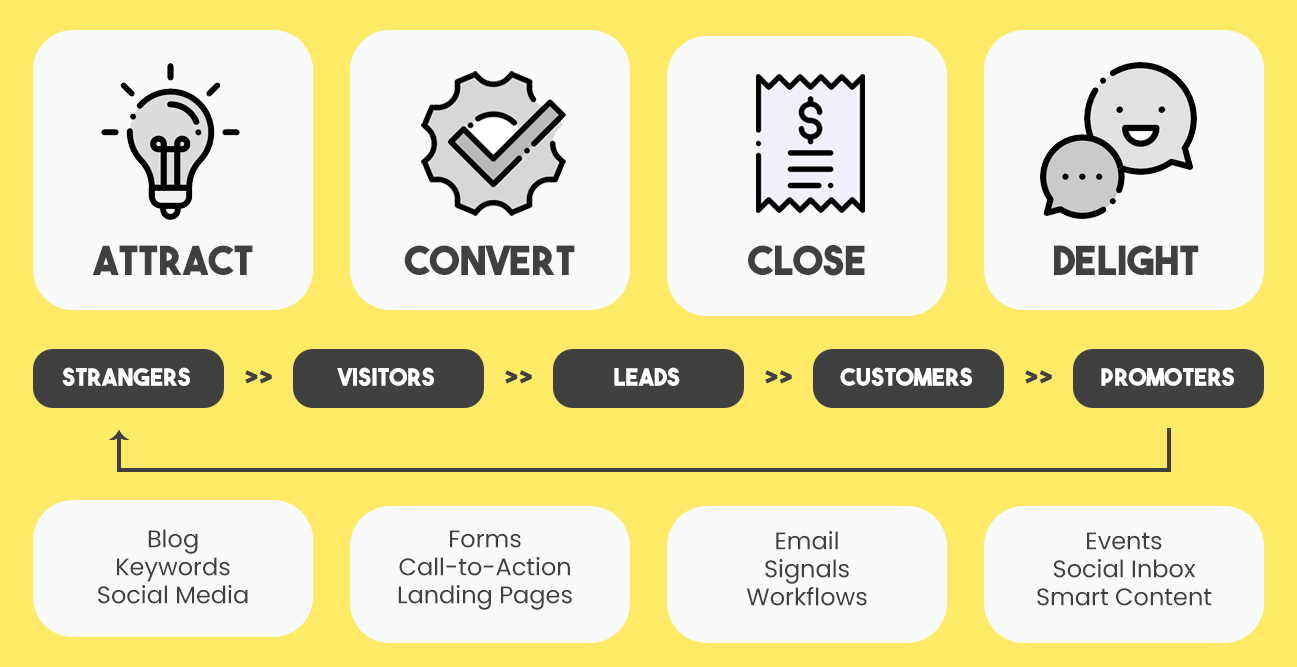 Source: Markenture
Source: Markenture
Understanding the touchpoints from a customer perspective will give you valuable knowledge that can guide you on how to align your content assets at each stage of the customer journey, to meet the needs of your customer and make an impact.
5. Testing
To make sure you have done an accurate job of mapping out your customer journey, you should test it out for yourself. Test and analyze the customer journey for each of your personas. That way, you will gain insight into where in the journey you might not be meeting your customer’s needs. By collecting this information you can make improvements and create a better customer experience.
6. Revise and make changes
A customer journey is not a static event, it is constantly changing in some ways. Therefore you need to continuously work and analyze your customer journey. The way consumers shop is affected by a lot of factors, such as upbringing, lifestyle, economy, and societal changes. The pandemic has for example had a major impact on the way consumers shop, the way they interact with brands, and the expectations of their shopping experience. So keep your customer journey up to date and keep looking out for different pain points that might appear along the way so you can quickly make improvements and keep the customers happy and ready to shop.
Understanding and mapping out the customer journey will provide you with the insight that can take your business to the next level. There are many factors that can affect the customer journey, and so, by having a clear picture of what it looks like you will be able to tailor your customer experience and create a great impact at each stage of the journey. It is an essential tool that will guide your strategies and marketing efforts. You can make one yourself or use a premade template to help you get started.
If you have any more advice on customer journey mapping or optimize the customer experience dont hesitate to contact us for a free audit – we can help you drive traffic and generate leads to your website.



